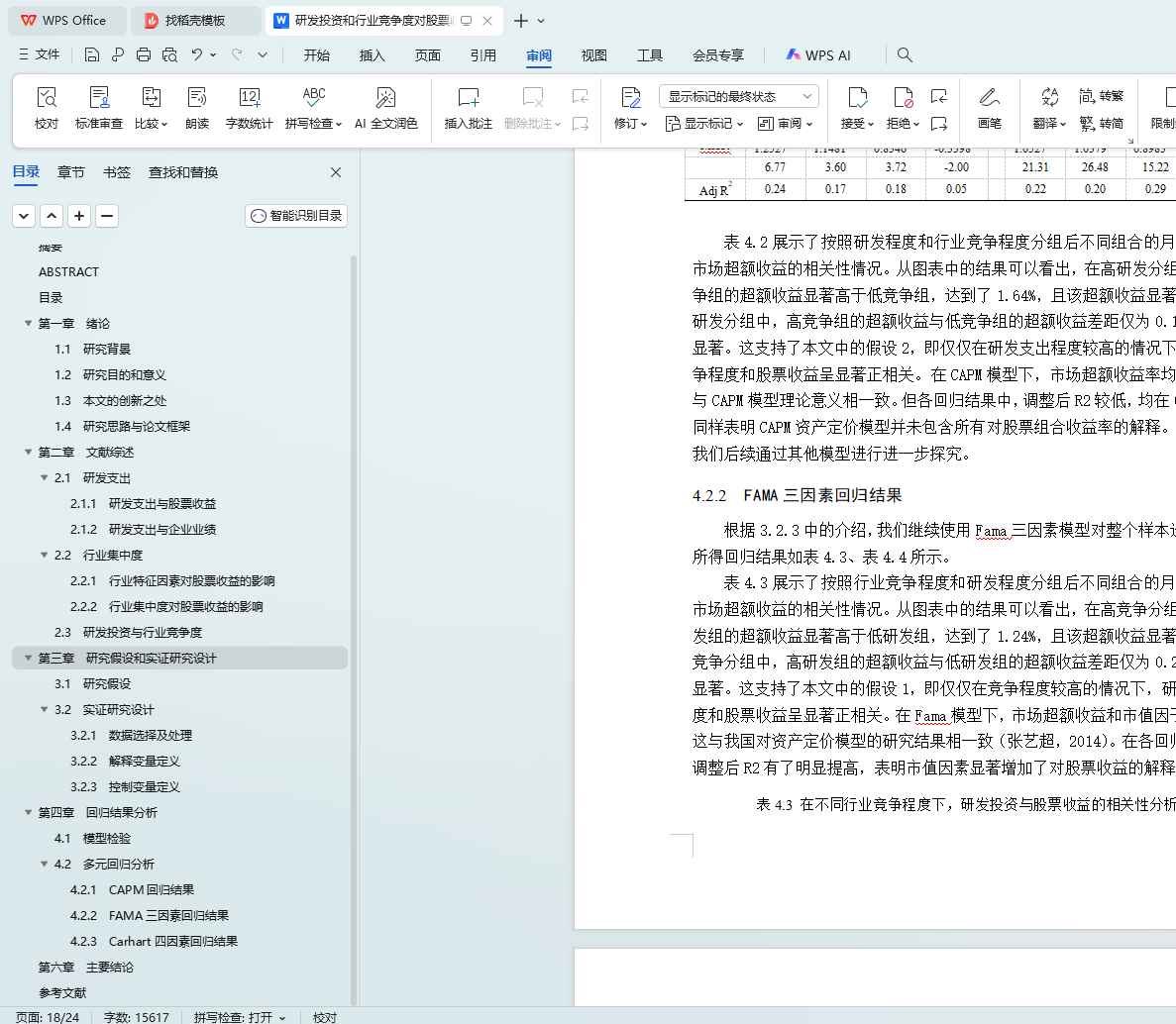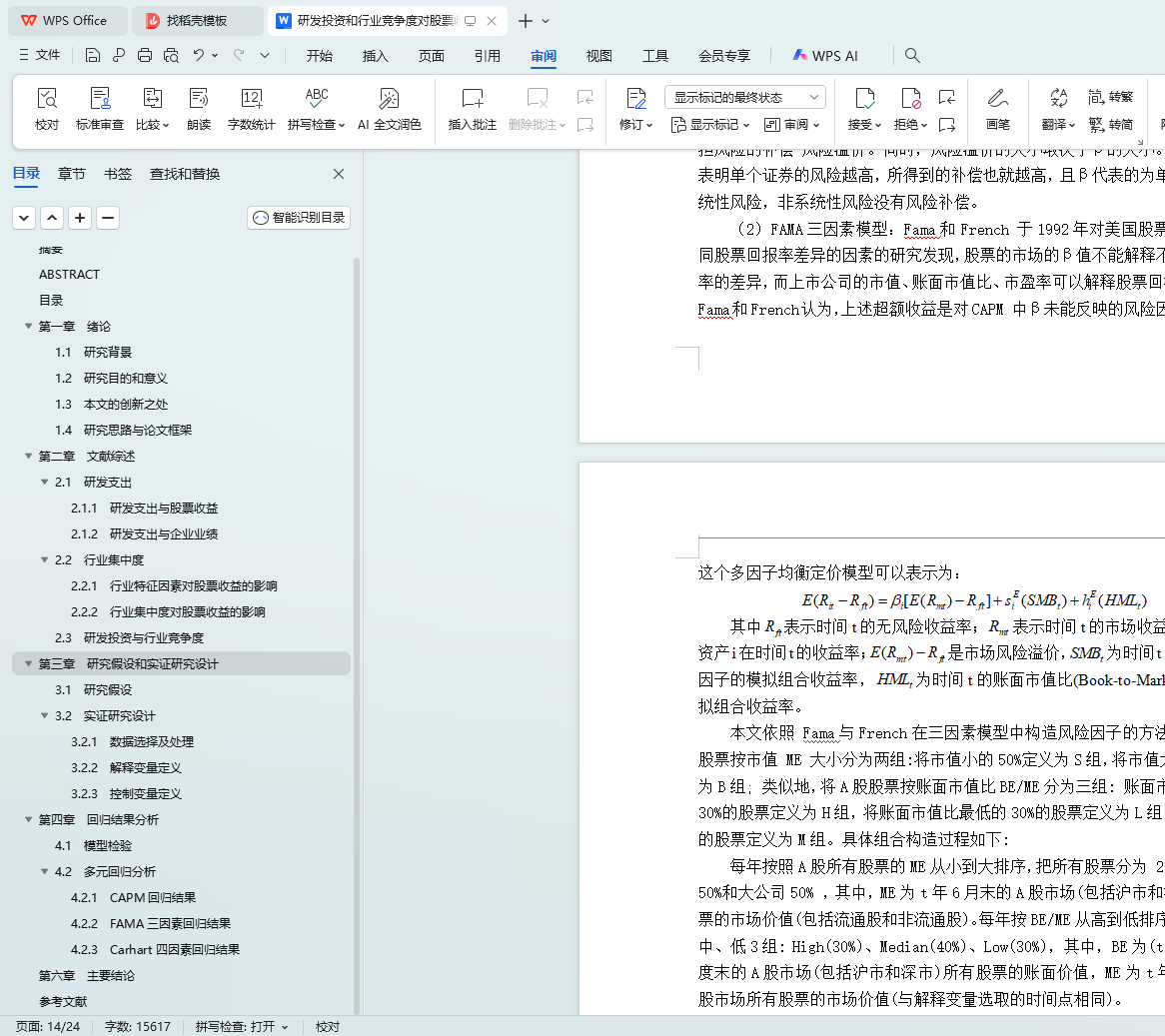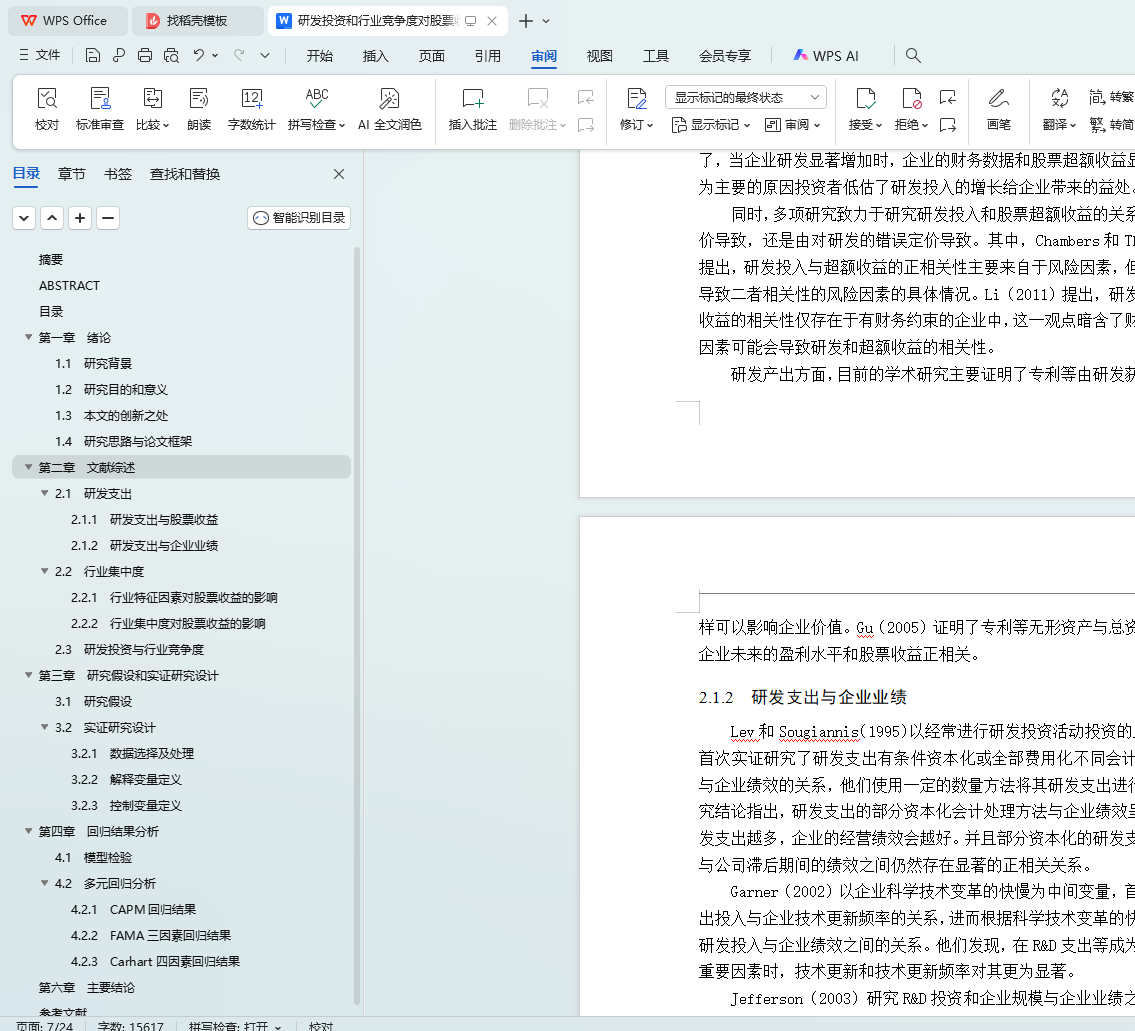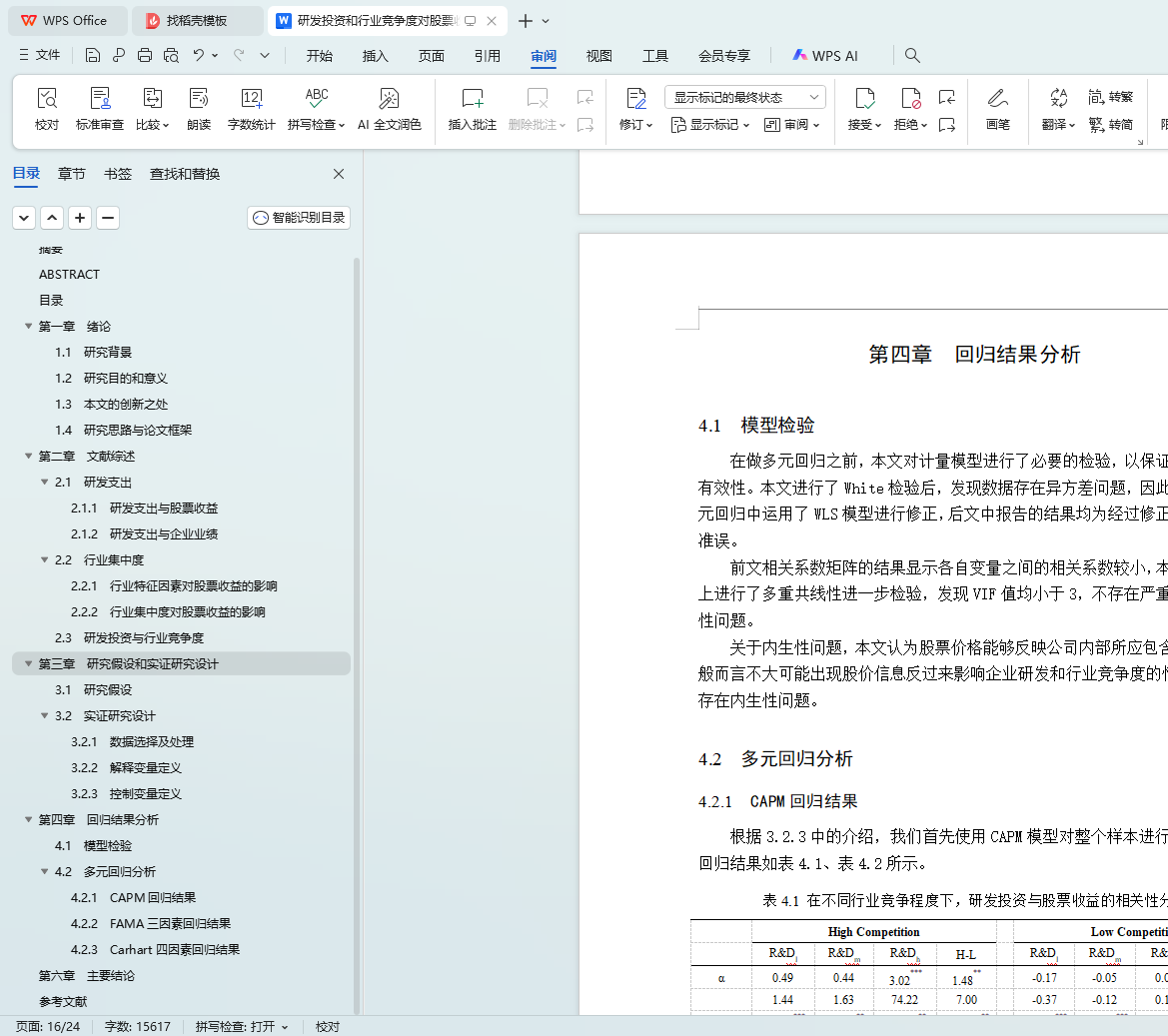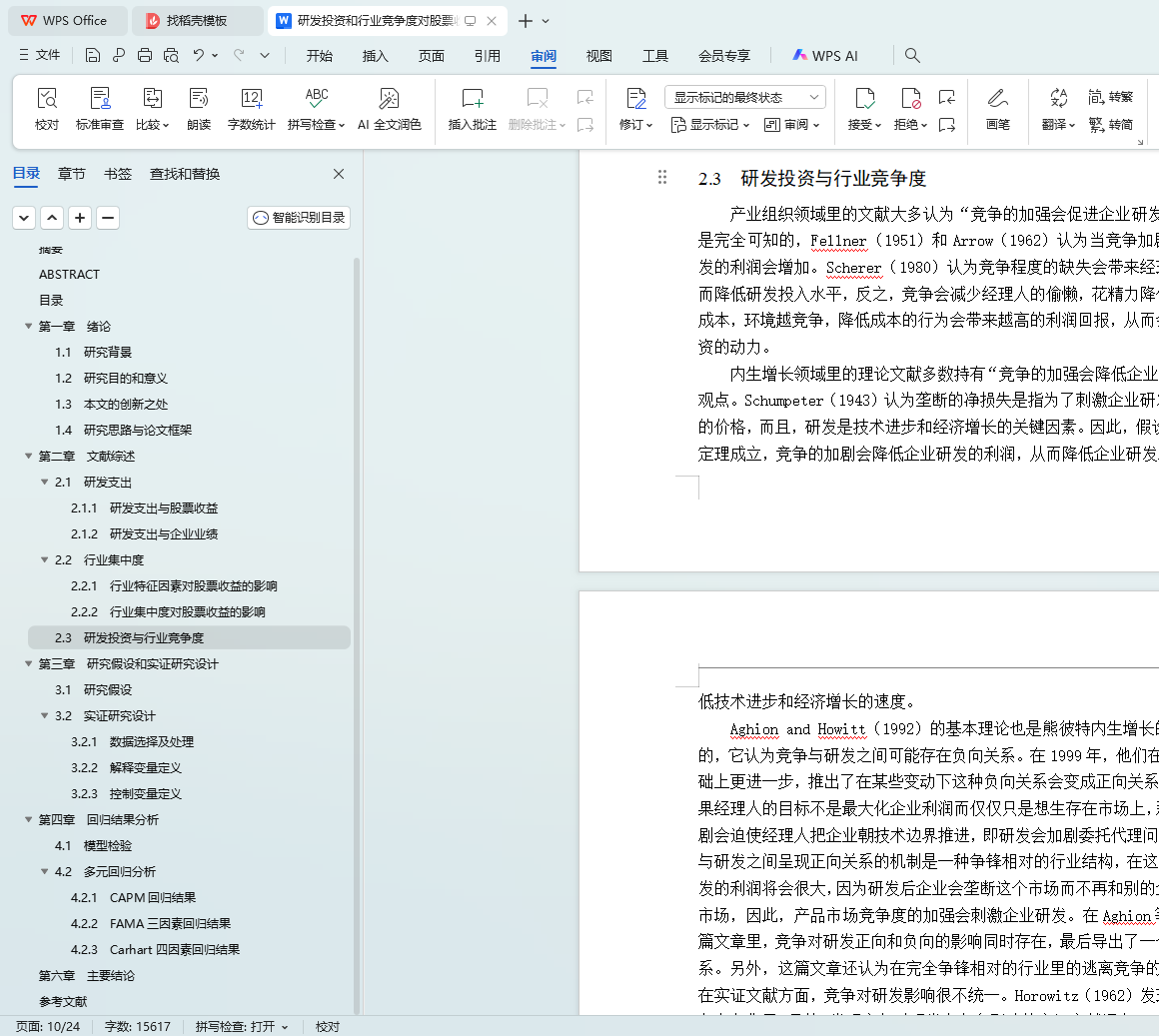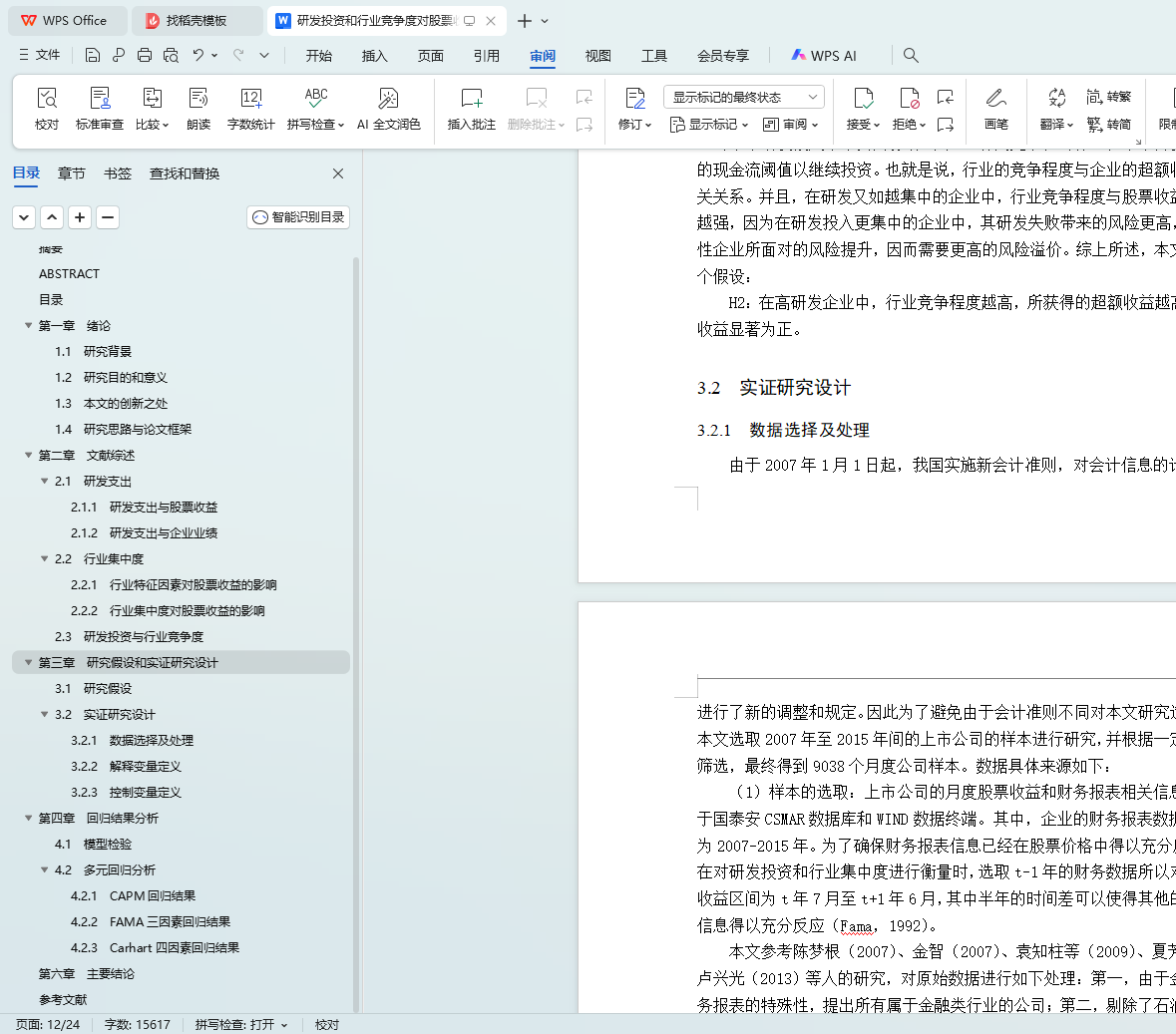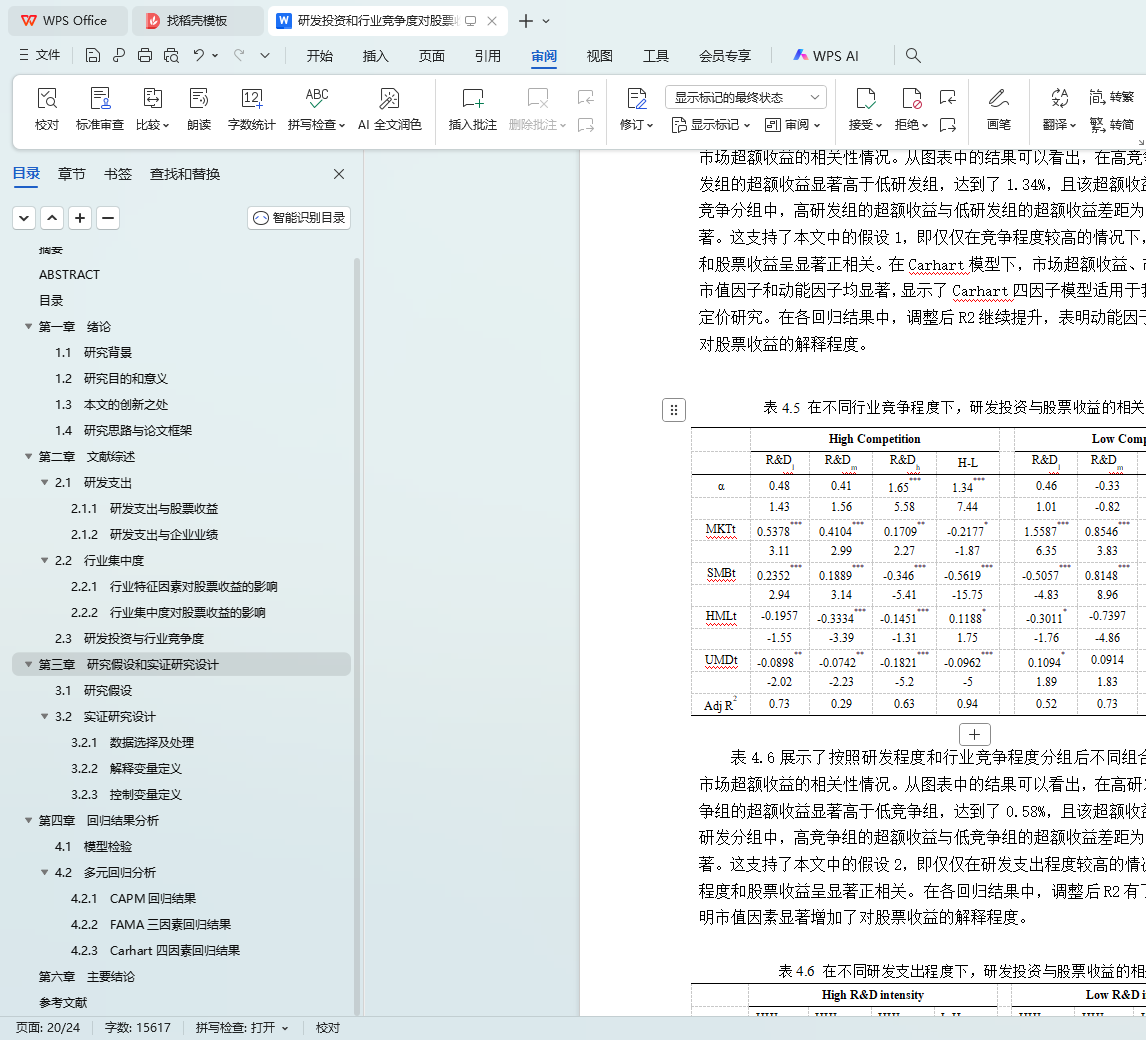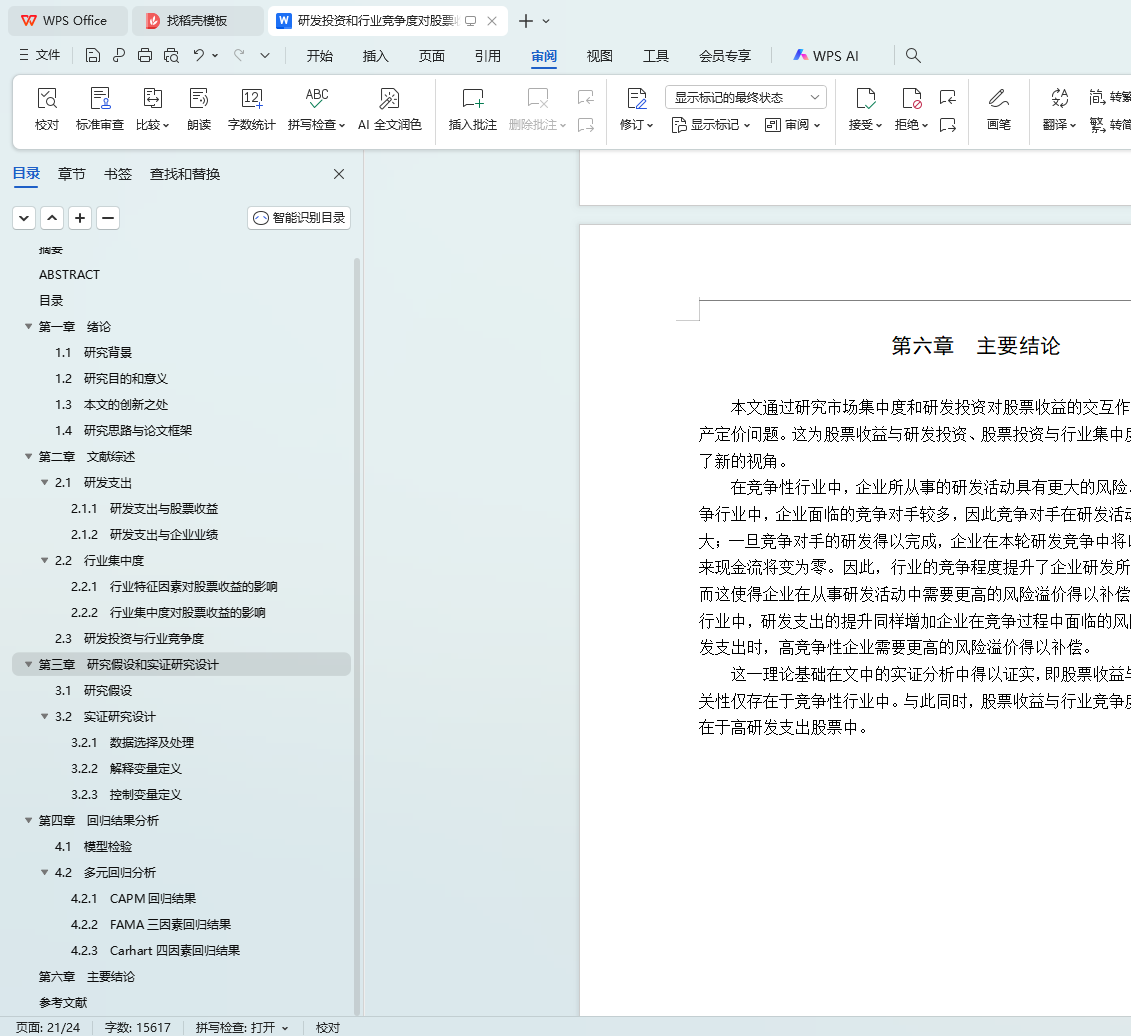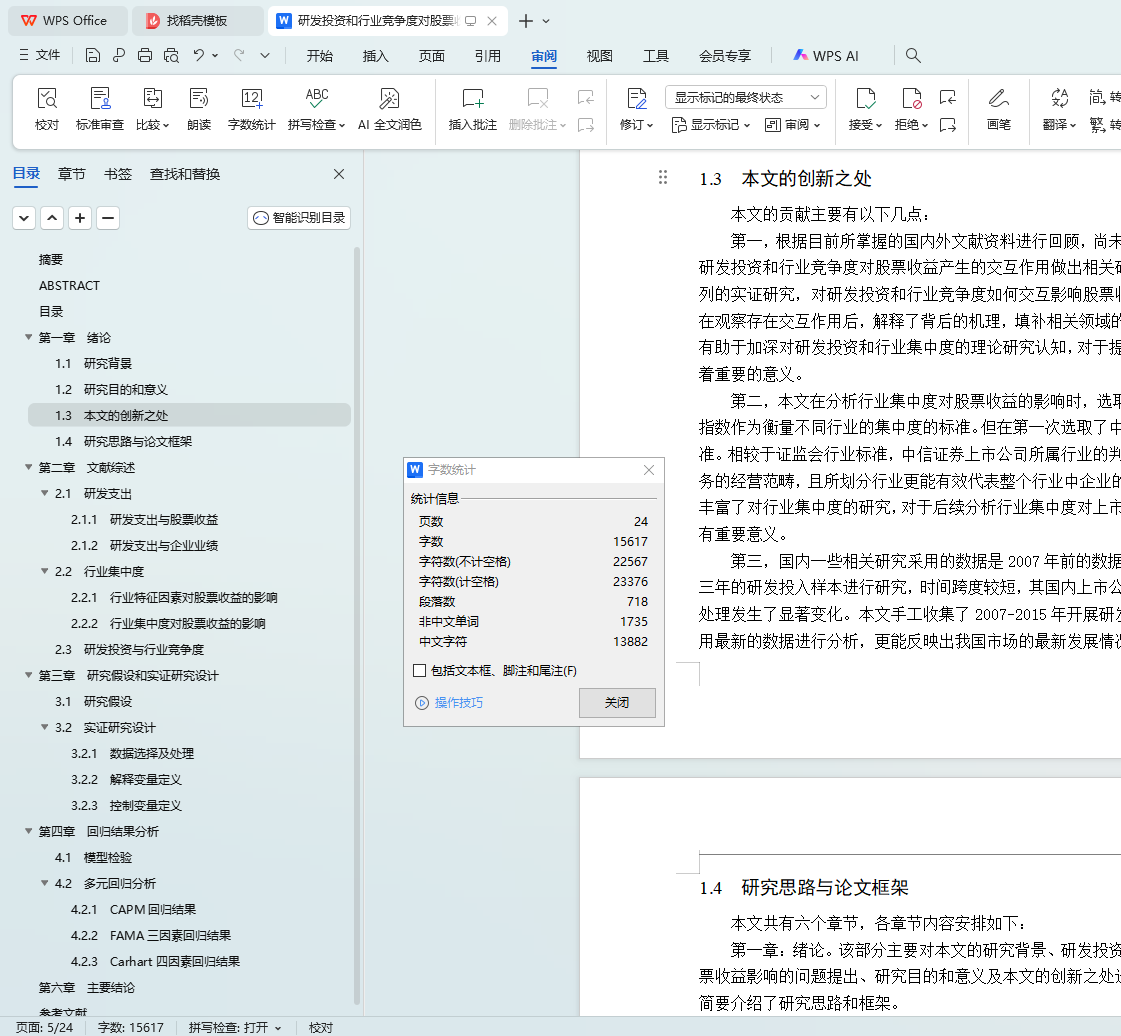摘要
本文通过研究市场集中度和研发投资对股票收益的交互作用,解决了两个资产定价问题。这为股票收益与研发投资、股票投资与行业集中度的相关领域提供了新的视角。
在竞争性行业中,企业所从事的研发活动具有更大的风险。主要原因是在竞争行业中,企业面临的竞争对手较多,因此竞争对手在研发活动中取胜的概率更大;一旦竞争对手的研发得以完成,企业在本轮研发竞争中将以失败告终,其未来现金流将变为零。因此,行业的竞争程度提升了企业研发所需未来的现金流,而这使得企业在从事研发活动中需要更高的风险溢价得以补偿。而在高研发活动行业中,研发支出的提升同样增加企业在竞争过程中面临的风险;因此,在高研发支出时,高竞争性企业需要更高的风险溢价得以补偿。
这一理论基础在文中的实证分析中得以证实,即股票收益与研发支出的正相关性仅存在于竞争性行业中。与此同时,股票收益与行业竞争度的正相关性近存在于高研发支出股票中。
关键词:研发投资,行业竞争度,股票收益
The Impact of R&D Investment and Industry Concentration on Stock Returns: Empirical Study Based on China’s A-Share Market
Yibin Zhang
Directed by Wei Cen
ABSTRACT
This paper tackles two asset pricing puzzles by testing the joint effect of product market competition and R&D investment on stock returns, and it provides new perspectives on the positive competition-return and R&D-return relations that have drawn a fair amount of attention from economists.
In competitive industries, firms frequently must enter innovation races with many rivals for new products or technologies. The potential future cash flows associated with R&D projects are more likely to be extinguished in competitive industries because rivals could win the innovation race. Therefore, competition raises the exercise thresholds for R&D investment options and magnifies R&D-intensive firm's exposure to the systematic risk.
These insights are confirmed by the empirical findings that the positive R&D-return relation exists only in competitive industries and that the competition-return relation exists only among R&D-intensive firms.
In close, this study suggests that competition has a significant impact on R&D-intensive firms' risk and return profiles and thus independently drives a significant portion of the R&D premium. Moreover, this paper proposes a potential mechanism through which market structure affects a firm's risk dynamics, thereby providing a risk-based explanation for the heretofore puzzling competition-return relation.
KEY WORDS: R&D Investment, Industry Concentration, Stock Returns
目录
摘要
ABSTRACT
目录
第一章 绪论
1.1 研究背景
1.2 研究目的和意义
1.3 本文的创新之处
1.4 研究思路与论文框架
第二章 文献综述
2.1 研发支出
2.1.1 研发支出的衡量方式
2.1.2 研发支出与股票收益
2.1.3 研发支出与企业业绩
2.2 行业集中度
2.2.1 行业特征因素对股票收益的影响
2.2.2 行业集中度对股票收益的影响
2.3 研发投资与行业竞争度
第三章 研究假设和实证研究设计
3.1 研究假设
3.2 实证研究设计
3.2.1 数据选择及处理
3.2.2 解释变量定义
3.2.3 控制变量定义
第四章 回归结果分析
4.1 描述性统计
4.2 模型检验
4.3 多元回归分析
4.3.1 CAPM回归结果
4.3.2 FAMA三因素回归结果
4.3.3 Carhart四因素回归结果
第六章 主要结论
参考文献
